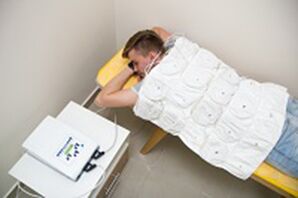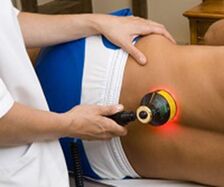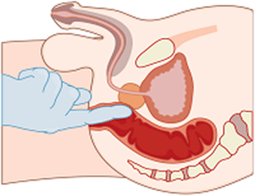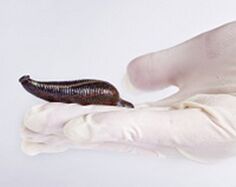Prostatitis is a common and dangerous disease that occurs when there is an inflammatory process in the prostate. Most often, the disease develops as a result of a circulatory disorder or an infection. According to medical statistics, prostatitis has been increasingly diagnosed in men of working age in recent years. The disease is accompanied by painful sensations during deurination and ejaculation. The manifestations of the disease negatively affect a man's quality of life. Prostatitis is dangerous for its consequences. Without timely treatment, the disease takes a chronic course that is difficult to treat. Prostatitis needs complex treatment. Consider effective treatments for prostatitis.
Basic therapeutic methods

If unpleasant symptoms of the disease appear, then a man should immediately consult a doctor in order to diagnose the disease in a timely manner. Based on the results of the examination, the doctor will prescribe treatment.
In this case, the doctor takes into account the following factors:
- the extent and form of the disease;
- the presence of complications;
- the duration of the course of the disease;
- individual characteristics.
It should be remembered that only complex treatment will help overcome prostatitis. Therefore, it is important to strictly adhere to all the doctor's prescriptions and recommendations.
The aim of prostatitis therapy is to reduce inflammation in the prostate.
All therapeutic methods of fighting the disease are divided into conservative and operative.
Conservative methods include:
- Drug therapy;
- Taking vitamin complexes and means for normalizing the immune system;
- Physical therapy;
- Physical therapy exercises;
- Massage;
- Spa treatment;
- Hirudotherapy;
- Mud therapy;
- traditional treatment methods.
Surgical methods are prescribed in advanced situations when scar tissue has formed on the gland and is unable to perform its daily functions. The affected tissue is usually removed during the operation.
Drug therapy
The method of treating prostatitis consists of taking antibiotics, alpha blockers, pain relievers, and other drugs. Consider more effective modern means of treating prostatitis.
Antibiotic therapy
Prostatitis is often bacterial in nature. Therefore, the doctor prescribes antibacterial drugs for treatment. This group of drugs offers effective treatment for both acute and chronic prostatitis. The pharmaceutical industry offers a wide range of antibacterial drugs to fight the disease.
Usually the doctor prescribes the following groups of antibiotics for treatment:
- Fluoroquinolones.
- Aminoglycosides.
- Tetracyclines.
- Cephalosporins.
- Penicillins.
- Macrolides.
For the treatment of acute prostatitis, intravenous antibiotics (cephalosporins or III generation fluoroquinolones) are usually prescribed. When the fever has subsided, further treatment with oral antibacterial agents will be continued. The admission period is 6 weeks on average.
Fluoroquinolones are commonly used for chronic prostatitis. These drugs easily penetrate the prostate and are effective against most gram-negative bacteria, chlamydia, and ureaplasma. Tetracyclines are effective if a chlamydial infection is suspected.
Sulfa drugs are prescribed to treat abscesses and chronic prostatitis caused by Proteus infection or Pseudomonas aeruginosa.
To cure viruses that have penetrated deeply inside, tablets and macrolide injections are prescribed. If prostatitis appeared as a result of the penetration of several pathogens, or the tests did not help determine the nature of the pathogen, drugs of the aminoglycoside group are prescribed. However, due to the large list of side effects, these drugs are not often prescribed.
With prolonged use of antibiotics, you need to support the body with ascorbic and folic acid, as well as B vitamins.
It is important to remember that the full course of antibiotic therapy must be completed in order to achieve effective results and prevent relapse.
Before prescribing an antibiotic, the doctor determines the root cause of the development of the disease. Antibacterial drugs only work against bacterial prostatitis. If the disease is due to impaired blood circulation, antibiotic therapy can harm the patient.
Alpha blockers
These drugs are prescribed to relieve tension in the muscles of the bladder and urinary tract in chronic prostatitis.
Treatment with these agents leads to a reduction in swelling and pain relief.
Anti-inflammatory nonsteroidal drugs
These drugs are effectively prescribed to treat the acute form of the disease. They relieve pain and inflammation, reduce swelling and improve discharge of secretions.
Medicines are prescribed in the form of tablets, powders or rectal suppositories.
Angioprotectors
Drugs improve the functioning of the capillaries of the prostate, blood flow and oxygen supply to the affected organs, and eliminate stagnant processes.
5 alpha reductase inhibitors
One of the effective representatives of this group of drugs is a drug that reduces the volume of the prostate, relieves tissue swelling, relieves pain and restores the rate of urine flow.
Immunomodulatory drugs
Usually, to normalize immunity, the doctor prescribes immunomodulatory drugs.
Medications to treat secondary immunodeficiency may also be prescribed.
Hormone therapy
In some situations, the inflammatory process is accompanied by erectile dysfunction. To restore the functioning of the organs of the endocrine system and restore an erection, the doctor prescribes hormonal therapy.
The use of suppositories
Rectal suppositories are effective for treating acute and chronic prostatitis.
List of Common Remedies:
- Ichthyol candles. They have a disinfectant effect, normalize blood circulation, relieve pain.
- Suppositories with prostate extract. They relieve inflammation and edema, relieve congestion and prevent blood clots from forming.
- Candles with deadly nightshade. Relieve pain and inflammation.
- Suppositories for the regeneration of cell tissue. The use of such suppositories quickly restores the work of the prostate.
Physiotherapy procedure
Physiotherapeutic treatment methods have also proven their worth. Physiotherapy consists of several techniques that have recently been successfully used to combat the disease. The doctor selects the type of procedure individually. The course of treatment has a positive effect not only on the prostate, but also on the entire body.
Physiotherapy procedures for prostatitis can achieve the following results:
- Improving microcirculation in the tissues of the prostate;
- increase the accumulation of drugs in the gland;
- reduce painful sensations;
- improve the quality of urination;
- remove the inflammatory process;
- Increase potency.

There are several methods of physiotherapy:
- Electrophoresis. The affected area is exposed to direct current with medication.
- Ultrasonic. It is considered one of the most effective therapeutic methods. The gland is affected by ultrasonic waves. The procedure is completely painless.
- Magnetotherapy.
- Magnetic laser induction therapy. The prostate is treated in a complex way with a magnet and a laser. The procedure improves blood circulation, speeds up the healing process of the affected tissues, and relieves pain.
- Laser therapy.
- Microwave microwave therapy.
- Ozone therapy.
- Vacuum therapy.
- Cryodestruction. Affected tissue is removed with liquid nitrogen.
And also used to treat prostatitis:
- Balloon dilation. The urinary tract is mechanically dilated using a catheter with an inflatable balloon at the end;
- Stenting. The procedure also continues with the dilatation of the urethra. In this situation, however, a stent is inserted. The latter is presented in the form of a cylindrical frame made of polymer material.
Physiotherapy methods are usually prescribed in conjunction with drug therapy to improve treatment outcomes. Such procedures are well tolerated and have no side effects. Side effects can occur with individual intolerance.
Magnetotherapy
A magnetic field is applied to the prostate through the skin. At the same time, the nutrition of the cells of the prostate is improved, their protective properties are activated and the removal of toxins from the tissues of the gland is accelerated. Magnetotherapy activates blood circulation and improves drug absorption.

Microwave microwave therapy
The affected prostate is directly exposed to electrical microwave waves. As a result, the temperature in the heated area rises, the blood vessels expand, and the blood flow accelerates.
In addition, as a result of an increase in temperature, there is a decrease in smooth muscle cramps. As a result, the man has improved drainage of prostate secretions and pain relief.
Laser therapy
During the procedure, the prostate tissue is irradiated with a low-intensity laser beam. This method thins the blood, accelerates the outflow of secretions and prevents the formation of microthrombi.
Laser treatment also increases the protective functions of the body and promotes tissue regeneration. Laser therapy is prescribed to treat chronic prostatitis.
Vacuum therapy
A special medical device is installed on the penis, under the influence of which blood flows into the penis and an erection occurs. It is recommended to combine vacuum therapy with laser therapy. During an erection, a laser beam is directed into the penis. The latter helps increase blood flow.
Ozone therapy
For treatment, a special liquid enriched with ozone is injected through the urethra. Typically, saline is used for the procedure. Ozone therapy restores the normal functioning of the prostate, has a bactericidal effect, promotes the restoration of damaged cells and is considered one of the modern methods of treating prostatitis.
For the procedure to be effective, it should be done every day. The duration of the therapeutic course depends on the stage of development of the disease and is 6-10 manipulations.
Home treatment
Physiotherapy procedures are usually performed in an inpatient setting. However, there are devices that allow you to perform the treatment at home. One of these devices is a device whose advantages should include durability and ease of use. With the help of the apparatus, the glandular tissue is exposed to a magnetic field, and heat and massage are performed.
The procedure takes about 10-12 minutes and is completely painless. For treatment, the tip of the device, which was previously wearing a condom, is inserted into the rectum. After the procedure, the tip is wiped with alcohol. The duration of therapy is 15 sessions.
The use of the device is contraindicated in the following situations:
- in the acute stage of the disease;
- with intestinal bleeding;
- in the presence of stones in the prostate;
- in the presence of cracks in the rectum and exacerbation of hemorrhoids;
- Men with genitourinary tuberculosis;
- with malignant neoplasms;
- with diarrhea;
- in a feverish state.
Before starting physical therapy, a man needs to be tested to determine blood PSA levels and do a transrectal ultrasound of the prostate. Such a diagnosis makes it possible to exclude oncology. If necessary, your doctor may order an MRI (magnetic resonance imaging) scan.
Physiotherapy methods are not prescribed for the treatment of calcareous prostatitis in the presence of calcifications.
massage
The procedure eliminates stagnant processes in the prostate and helps eliminate toxins formed by inflammatory processes.
Contraindications to massage:
- acute phase of the disease;
- Adenoma;
- malignant neoplasms;
- Prostatolithiasis - the presence of stones in the prostate;
- Tuberculosis.

The massage is performed by a doctor. The patient assumes the knee-elbow position to maximize relaxation of the pelvic muscles. The doctor puts a finger through the anus and massages the prostate. The course usually consists of 10 massages.
This procedure promotes secretion from the gland, activates blood circulation, increases resistance to infection and accelerates the recovery of damaged tissues.
Prostate massage has rarely been prescribed recently as medicine advances and new, more effective treatments have emerged.
physical therapy
Very often prostatitis develops due to an insufficient blood supply to the glandular muscles.
To normalize blood microcirculation, deep squats are considered effective. You have to squat with your arms raised. You must do this exercise at least 100 times, 3 sets per week.
The following exercises are also effective:
- Scissors while sitting. Do the exercise 20 times on each leg.
- Raise your straight legs while lying on your stomach. Repeat 20 times.
- Lie on your back with your knees bent at your knees so that your knees are facing your face. Wrap your arms around your legs and lie down for up to 20 minutes.
- In the morning, massage in the perineum for about 5 minutes.
The above exercises along with squats will help you cure the disease for free.
Hygienic treatment

Patients are referred to the sanatorium when a prolonged remission occurs. All over the world there are sanatoriums that treat prostatitis, improve erectile dysfunction, and improve health.
As a rule, the following procedures are prescribed for treatment:
- Drink mineral water;
- Physical therapy exercises;
- various physiotherapeutic methods;
- Hirudotherapy;
- Mud therapy;
- Balneotherapy.
Clean air, calm atmosphere and warm climate have a positive effect on the condition of the prostate.
surgery
The main indications for surgical intervention:
- Sclerosis of the prostate;
- Sclerosis of the bladder neck;
- Glandular stones;
- Sclerosis of the seminal tubercle.
The main surgical methods used to fight prostatitis are shown in the table.
| Method name | Brief description |
| Transurethral resection | The operation is performed with a resectoscope, so the risk of complications with this procedure is minimal. During the surgery, the surgeon removes some or all of the glandular tissue to relieve pressure on the urethra. Allows you to get rid of the unpleasant manifestations of the disease - pain and nocturia. |
| Adenectomy (prostatectomy) | Open abdominal surgery in which the prostate is removed with surgical instruments. It is characterized by a longer period of rehabilitation. |
The operations are performed under general anesthesia.
Traditional methods
The use of folk methods of treating diseases can improve the metabolic processes in the prostate.
Healing decoctions, infusions and tinctures are made from various medicinal plants. Medicinal plants can also be added to the baths.
The following recipes are considered to be the most effective:
- A liquorice root brew. To make 20 g of raw materials, mix with 200 ml of boiling water. Boil the mixture for about 20 minutes. Consume 1 tbsp. Spoon. 4 times a day. The duration of treatment is 10 days. Effective in case of exacerbations of the disease.
- Red root infusion. Prepare the infusion in a thermos. To prepare, pour 25 g of raw materials with 1 liter of water. The mixture is infused for one hour. Drink 100 ml of hot beverage instead of tea. Take the product before meals. The number of appointments per day is 3 times.
- A brew from the roots of the marshmallow. It should be diluted with 2 tbsp. Tablespoons of chopped roots with a glass of boiling water. Let cook for half an hour. Drink 50 ml of the drug, the number of doses per day - three times. The duration of treatment is 15 days.
- Honey. Contraindicated in people with diabetes mellitus and honey allergy. You need about 10 kg of natural blossom or linden honey. It is recommended to add 100-200 g of honey to tea instead of sugar every day. After a while, the emaciation normalizes and the pain disappears. After recovery, honey is recommended for prophylaxis.
- Honey with celandine. 100 g of dried herbs are mixed with 0. 7 ml of boiling water. Let the mixture cook for about 15 minutes. Then let the broth cool down a bit and strain. Add 500 ml of honey to the drink. Store the product in a glass container in the refrigerator. Drink 1 tbsp. Spoon 3 times a day. Take the drug before meals. During treatment with celandine with honey, it is forbidden to drink alcoholic beverages and take medication. In the complex, you need to consume 200 ml of oat broth three times a day.
- Pumpkin seeds. They contain zinc, which is very important for everyone. It is recommended to eat 30 seeds a day before meals. And raw seeds are also crushed in a meat grinder and mixed with 0. 2 liters of honey. Stir the mixture well and form small balls. The latter are kept in the refrigerator. Consume 1 ball 1-2 times a day, half an hour before meals. The ball should be chewed for a few minutes and not swallowed whole.
- Infusion of hazel. Bark or leaves are enough. 1 TBSP. l. Brew raw materials in 0. 2 liters of boiling water. Cover the container with a lid and let it steep for 30 minutes. Then strain the drink and drink 50 ml 4 times a day.
The above methods will help you achieve long-term remission or fully recover from the disease. The main thing is to adhere to the recommendations and dosage.
What other methods are used to treat prostatitis?
For the treatment of prostatitis, the following additional non-traditional methods are also used effectively:
- Stem cell injection. The latter penetrate the affected area of the gland and intensively divide and replace damaged cells. This method is prescribed for chronic prostatitis.
- Acupuncture. Therapy is carried out by activating special points. As a result, blood circulation improves.
- Hirudotherapy. The method uses leeches. With the help of hirudotherapy, the swelling of the gland is eliminated and blood circulation is improved.
- Chinese plaster. It activates blood circulation, relieves inflammation, increases libido, restores erection and prevents prostate enlargement.
- Japanese drugs. They relieve unpleasant manifestations of the disease and prevent possible complications.
As well as leaving positive feedback on the forums, phytotherapy and homeopathy.
The most common herbal preparations are:
- Preparations based on the extract of the American sabal palm. The funds are characterized by anti-inflammatory and anti-inflammatory effects.
- Preparations with African plum extract. Means inhibit sclerotic and cicatricial changes in the gland.
Prostatitis is considered a dangerous disease. A lack of timely therapy can lead to irreversible consequences. Based on the results of the diagnosis, the doctor selects an individually effective treatment regimen that is suitable for the price. Complex therapy allows you to quickly overcome the disease.





























